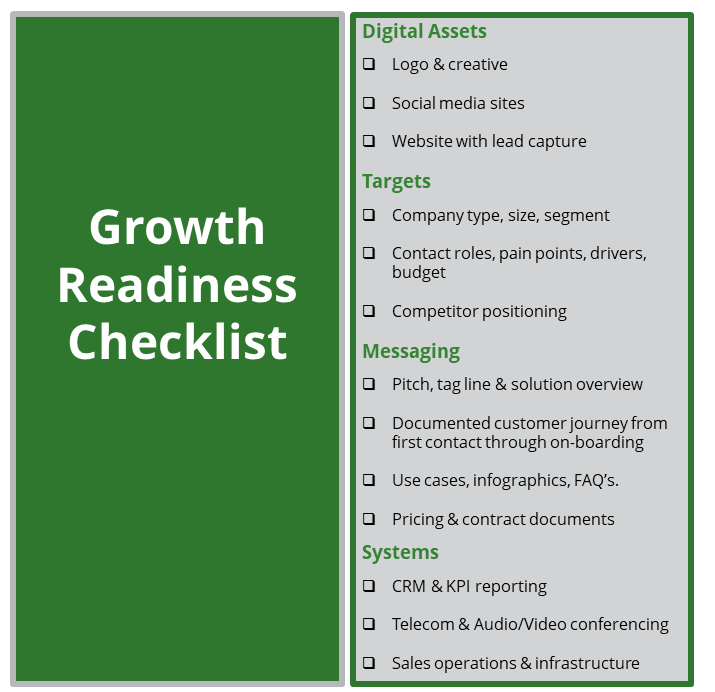Growth hacking is a strategy used by startups, based on rapid experimentation with different mixes of marketing, product development and sales to get a startup off the ground and growing as quickly as possible.
There’s a lot of talk and opinion about growth hacking. Growth hacking can be a viable approach to gauge product-market fit and capture some early customers, but without the right plan it can be a very risky way to try and grow a startup. In fact, more often than not growth hacking is an expensive, disorganized way to kill a startup before it even gets off the ground.
What's the problem with growth hacking?
Growth hacking may seem like it’s a good idea in theory, but in practice, it’s often disorganized and always disconnected.
The whole basis of growth hacking is rapid movement from one customer segment to another, with quickly-paced blog and social media posts, online advertising, and other media, addressing each customer segment with a scattershot approach to see which one 'bites' first.
The problem with growth hacking is that most startups aren’t prepared with the right information, systems, strategies and resources to efficiently and effectively execute the tactics and processes to accelerate growth. Money and time is wasted addressing markets and methods that won’t deliver results, typically due to incomplete or misguided research, absent or at best immature processes, and lack of staff and systems to support the effort - which ultimately ends in a frustrating waste of time and capital.
Smart growth without hacking
Growth is more likely to occur when a startup is prepared with clear market insights, identification and validation of messages that resonate with target prospects, and a goal-focused strategic roadmap developed with intention, and not mashed together for speed over results. If a startup does not have a structured method to identify, define and validate their target market and ideal customer profile, they’re not yet ready to launch, and growth is out of the question. Spending time and money on growth hacking, without knowing the market, message and roadmap, simply will not move the needle.
So, what’s a better way for a startup to accelerate growth?
Growth Hacking Strategy for Startups
Build a growth engine, using a prescriptive, building block approach to progress from discovery to product-market fit to revenue-producing startup and then scaleup, focused on reaching specific, measurable, attainable, realistic and time-bound company goals.
Whereas growth hacking is a roll of the dice, a growth engine provides a structured system and framework for startups to quickly validate product market fit and calculate revenue opportunities without the mess and chaos of a hacking approach. The growth engine activates a startup’s target market, while systematically cultivating a revenue pipeline and providing a seamless feedback loop for progressive strategy and process optimization, to deliver more growth at scale.
Growth engines are mobilized by expert marketing, business development and sales operations resources. Where growth hacking takes a 'fly-by-the-seat-of-the-pants' approach, growth engines include a properly setup sales CRM, an integrated sales operations application, communications systems and tools, and structured KPI reports to measure, compare and fine-tune the effectiveness of target market engagement processes and assets. Growth hacking, by contrast, reactively considers process and systems, making it much more difficult to consistently and accurately measure the effectiveness of the efforts, and does not set a strong foundation for growth at scale.
Growth engines just make more sense, especially in launching a startup on the road to growth.
Growth planning for startups
Before growth can happen, there are several steps a startup must take:
- Be prepared. The best preparation is intentional, structured, and focused, not a mashup of experiments.
- Know intimately the target audience, their businesses, their pains and their successes, as well as where they’re going.
- Have all messaging, branding, and digital assets complete, approved, and ready for ‘prime time’. There’s simply no excuse to put out less than the best impression at all times.
- Set up the sales CRM and business development workflow system before addressing the market. Have all materials and resources ready, and be prepared to answer every question the prospect may ask - before they ask it.
- Consistently and strategically engage the target audience on a personal level, not just through generalized blog posts, social media, or email campaigns. Prepare and send individual messages to LinkedIn connections and target prospects. Pick up the phone. Ask for a conversation, and openly share the reason for the conversation. It’s amazing what can be learned by talking with someone.
- Make sure you have developed - and will follow with discipline - clearly defined processes for capturing and validating the feedback from your target market. This is the basis to prove sustainable and consistent revenue growth over time.
- Finally, do not hire a VP of Sales (nor any full time sales or marketing employees for that matter) until the growth engine is fully built, the target market is validated, customers have been acquired and revenue forecasts are supported by accurate and verified data. Hiring a sales team too early is an expensive death knell for any startup.
Here's a handy checklist to get started on a growth engine:

About Sellerant
Our roots go back to the dotcom boom days, when our founder worked with Silicon Valley VC's and their hottest startups. From this experience was born the inspiration to form Sellerant in 2007, based in Austin, TX. We've been helping innovative startups scale, pivot or fail faster with less cost, risk and burden ever since.
We love to help founders and investors all over the world. Drop us a note to engage@sellerant.com or call +1-512-861-8100 and let us know how we can help you.
Sellerant. Accelerate Growth.